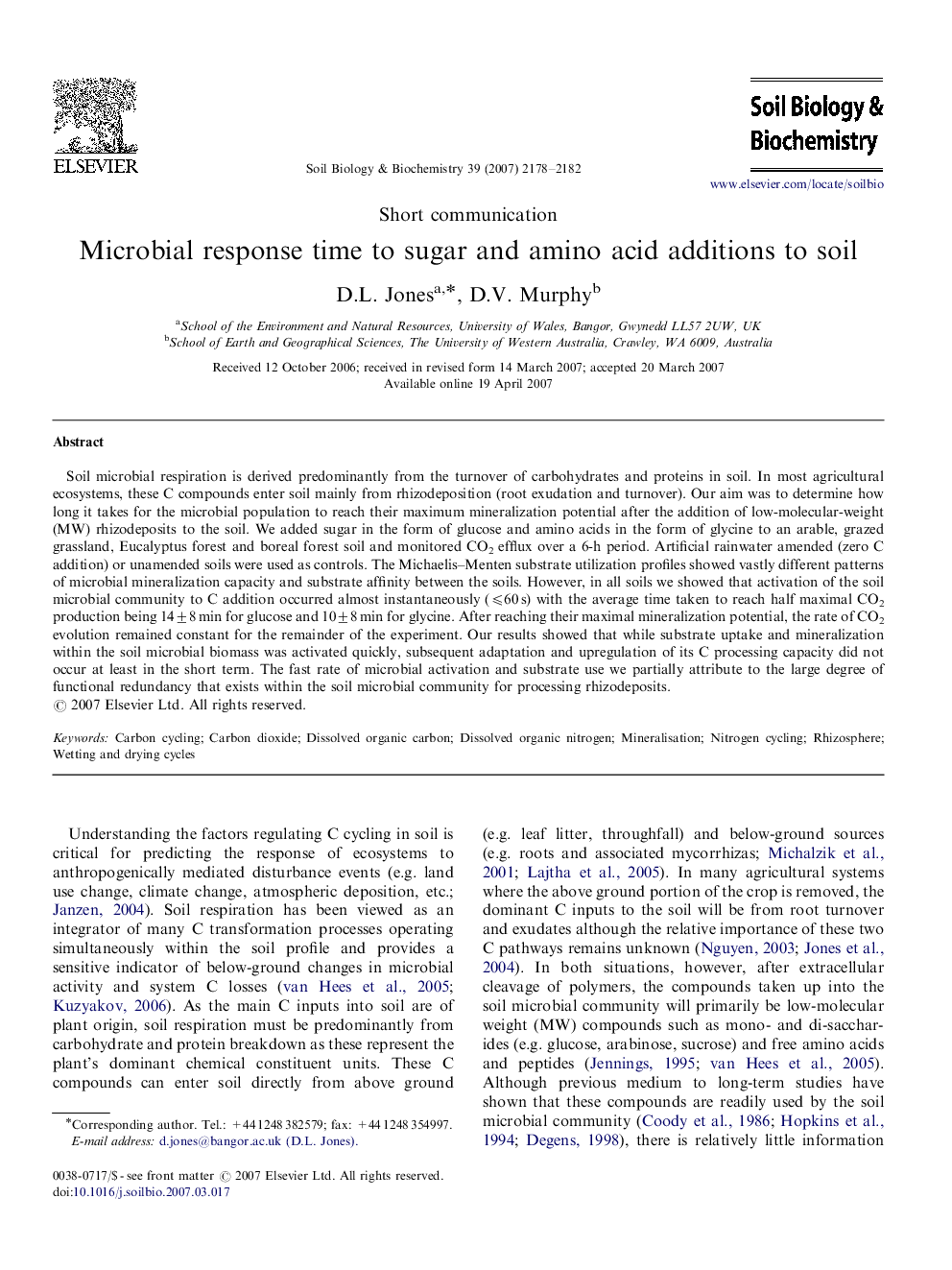| Article ID | Journal | Published Year | Pages | File Type |
|---|---|---|---|---|
| 2026084 | Soil Biology and Biochemistry | 2007 | 5 Pages |
Soil microbial respiration is derived predominantly from the turnover of carbohydrates and proteins in soil. In most agricultural ecosystems, these C compounds enter soil mainly from rhizodeposition (root exudation and turnover). Our aim was to determine how long it takes for the microbial population to reach their maximum mineralization potential after the addition of low-molecular-weight (MW) rhizodeposits to the soil. We added sugar in the form of glucose and amino acids in the form of glycine to an arable, grazed grassland, Eucalyptus forest and boreal forest soil and monitored CO2 efflux over a 6-h period. Artificial rainwater amended (zero C addition) or unamended soils were used as controls. The Michaelis–Menten substrate utilization profiles showed vastly different patterns of microbial mineralization capacity and substrate affinity between the soils. However, in all soils we showed that activation of the soil microbial community to C addition occurred almost instantaneously (⩽60 s) with the average time taken to reach half maximal CO2 production being 14±8 min for glucose and 10±8 min for glycine. After reaching their maximal mineralization potential, the rate of CO2 evolution remained constant for the remainder of the experiment. Our results showed that while substrate uptake and mineralization within the soil microbial biomass was activated quickly, subsequent adaptation and upregulation of its C processing capacity did not occur at least in the short term. The fast rate of microbial activation and substrate use we partially attribute to the large degree of functional redundancy that exists within the soil microbial community for processing rhizodeposits.
